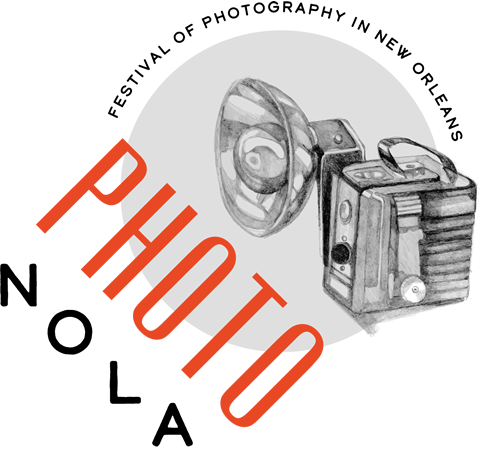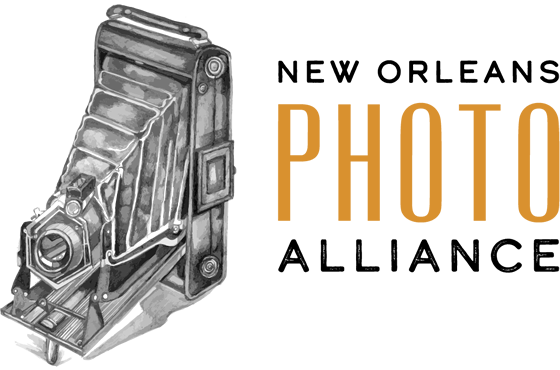Elizabeth Stone, Walker Pickering and Lee Deigaard were selected from among seventy photographers who attended the 2013 PhotoNOLA Portfolio Review.
For one weekend photographers had one-on-one meetings with influential editors, curators and gallerists assembled from throughout the U.S. and abroad. After the portfolio reviews concluded, each reviewer was asked to select three outstanding projects. Elizabeth Stone received the most votes, earning her the PhotoNOLA Review Prize, which includes a solo exhibition at the New Orleans Photo Alliance Gallery during the ninth annual PhotoNOLA, a cash award of $1000, and a marketing consultation with Mary Virginia Swanson. 2nd Place winner, Walker Pickering, and 3rd Place winner, Lee Deigaard, are recognized with image galleries on the PhotoNOLA website. All three artists will be featured on Lenscratch.
Elizabeth Stone
Elizabeth Stone is a visual artist and educator based in Montana. Her work explores impermanence, frequently using the natural world as a point of departure when considering her own place in the world and the marks she makes.
“Our history has been dotted with photographers who documented the marks and tracks left by humans and animals of past eras, but they were largely intended as more-or-less records of some sort of passage through land and time. Elizabeth Stone begins at that point in her explorations and then searches for the lyrical, mystical and symbolic within those markings upon the media of earth and snow that briefly holds them. In this fashion she does something unique: she allows the animals who made these signs of passage an expressive voice through the brief time and natural spaces they once occupied. And thus it follows, throughout this special collaboration Stone finds her own wondrous and celebratory vision.”
– Roy Flukinger, Harry Ransom Center
Walker Pickering
Walker Pickering is an artist and photographer based in Austin, Texas. His work is primarily documentary in nature, and his recent projects explore young musicians involved in the marching arts, and his childhood homes in West and Southeast Texas.
“Walker Pickering approaches his subjects with a sense of dignity, and subtle sense of humor. There is a respectful rhythm to this narrative that weaves us into the private world of the high school band.”
– Rose Wind Jerome, Center for Photography at Woodstock
Lee Deigaard
Lee Deigaard is a conceptual artist based in New Orleans whose work incorporates many disciplines. Her photography explores the ambiguous relationship between humans and animals, utilizing a hunter’s camera to capture nocturnal images of wild animals in the landscape.
“Deigaard’s black and white prints are beautiful and offer an artistic view of the natural world. At first glance, the animals look frightened, frozen like statues, afraid to move, caught by a trespasser’s strange apparatus that makes an unnatural sound. Then as you take in her portfolio, you begin to understand that the animals aren’t frightened at all. They are welcoming—posing as if Deigaard was there directing them. They invite you in and welcome you to their splendid world, free of man’s destructive hand.” – Kurt Mutchler, National Geographic
More About Elizabeth Stone
Statement
Making Tracks
This work centers around the idea of making tracks, leaving marks, and what is left behind. What is disturbed along the way? Does the grass bend or break? Does the snow reveal a lonely animal or a veritable highway of activity? Which path do we take?
My fascination with animal tracks began in March of 2011 during my artist residency at the Ucross Foundation in Clearmont, Wyoming. At the time of the residency, I was reading “The Tiger” by John Vaillant. Vaillant describes reading tracks as one of the earliest languages:
“Before we learned to tell stories, we learned to read them. In other words, we learned to track. The first letter of the first word of the first recorded story was written – printed – not by us, but by an animal. These signs and symbols left in mud, sand, leaves and snow represent proto-alphabets. These cryptograms were life and death exercises in abstract thinking.”
I was drawn to these prints in snow or grass. They became the simplest form of the story of the animal’s existence, their life, the things they leave behind. I print them with heavy black ink and thick cotton paper.
I begin to consider my own tracks. What marks do I make? What marks do I hope to make?
Bio
Elizabeth Stone is a Montana based artist who’s work explores identity and impermanence by combining her study of photography and drawing with biology and digital technology. The duality of art and science is a strong influence and she frequently looks to the natural environment as a point of departure when considering her own place in the world and the marks she makes. Influenced by artists as diverse as Harry Callahan, Alberto Giacometti and Franz Kline, she uses a strict practice to push what is expected of the photographic medium.
Elizabeth’s studies of place and passage of time typically extends for years before she produces a portfolio of limited edition prints. She is grateful for the many artist in residences that she has been awarded which provide her with concentrated focus for creating original work while engaging in stimulating intellectual dialog with other artists.
More About Walker Pickering
Statement
Esprit de Corps
I began piano lessons at age 8, joined the band in junior high school, the marching band in high school, made the all-state band, and went on to college to train to become a high school band director.
In my first year of college I fully embraced the college marching band experience, going so far as to also audition for a drum & bugle corps that would go on tour for the summer. It was around this time that I began to see music only as a chore, and my doubts about my future profession became inescapable. I loved performing, but music could no longer be my primary focus.
Relegating my musicianship to footnote status seemed traumatic at the time, and I still miss the special connection that only a group of musicians can experience through performance. This work has allowed me to reconnect with a culture I left behind more than a decade ago. Esprit de Corps refers to “the common spirit existing in the members of a group and inspiring enthusiasm, devotion, and strong regard for the honor of the group.”
Bio
Walker Pickering is an artist and photographer based in Austin, Texas. His work is primarily documentary in nature, and he uses photography as a means to get access to people and places that might normally be unavailable. Walker’s work has been exhibited throughout the United States, and is included in a number of private and public collections, including the Museum of Fine Arts, Houston and The Wittliff Collection of Southwestern & Mexican Photography. He is the recipient of the 2013 Clarence John Laughlin Award, among others, and regularly teaches, lectures on his work, and photographs on commission.
More About Lee Deigaard
Statement
My work portrays animal protagonists and the landscape we mutually inhabit.
I am interested in ways of seeing and being seen: the meeting and crossing of gazes, looking through and seeing [what is] past. The mind’s eye, the forensics of memory, recollection, and projection, the existential filters of species and tree branches and deep darkness.
Eyes are windows, windows are viewfinders, boundaries, frames, and lenses.
Object, subject, free will, trespass are illuminated in the hidden moments between moments. The plasticity of identity, of identification, shares borders- human and animal, light and dark, body and space.
Bio
Lee Deigaard graduated from Yale University with a major in fine arts and earned graduate degrees from the University of Michigan School of Art and Design and from the University of Texas at Austin where she held a Michener Fellowship in Creative Writing. In 2012 she won the Clarence John Laughlin Award for photography for her series of nocturnal images of animals “Unbidden”. In 2013, she has had solo shows at the Alexandria Museum of Art, the Acadiana Center for the Arts, the University of New Orleans, and the Contemporary Art Center in New Orleans where her multi-level video, photographic, and sculptural installation “SubMERGE” remains on view through Feb 2, 2014. Her solo show of photography “Trespass” and her video installation “PULSE” open January 2014 at the Ogden Museum of Southern Art through April 6, 2014. She is an artist member of the New Orleans collective The Front.

























